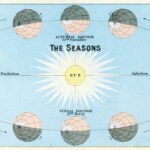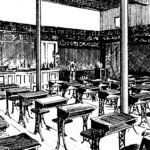Every January, millions of people around the world resolve to do things differently. Some want to eat better. Some want to keep in better touch with friends. Others want to travel more. Many want to get more physically active. A lot of these resolutions quickly drop off and fall by the wayside. Do you make resolutions to teach differently? Do you have problems keeping to your resolutions? There are many ways to prevent that from happening, even starting with what you set as your pedagogical resolutions.
Resolve to keep changing. Part of the reason our resolutions often fail is that we decide on a one-time fix without planning for the long term. Changing eating behaviors is a great example. When I teach about dieting in my health psychology class, I share the disturbing finding that no diet is empirically better than others for long-term weight loss. Yes, some (e.g., Weight Watchers, the Mediterranean diet) show some short-term effectiveness, but few long-term studies show any success for any one plan. The problem is that people make eating changes that are so fixed (e.g., no more pizza) that they think focusing on those is enough and ignore what else has to change. With teaching, think of one item (e.g., I want to make my syllabus warmer) then carve out the time for change or miss the window to change (for syllabi, before class starts). Solve this by resolving to keep changing. Create time before each new class to make changes. Set aside time during each class where you reflect on what changes are needed. (A good time is after a formative evaluation; see the 2×2FA method.) As much as you want to move on to a break, take time right after a class to list your changes. Instead of changing in January after the start of the New Year, resolve to keep changing every class.
Develop a mechanism for change. We have all had classes that did not go well. Maybe we did not cover a topic well, a demonstration failed to demonstrate anything, or we did not anticipate how a difficult a concept would be and so did not have good examples ready. In the moment, it is crystal clear what needs to be different. But even a few days or classes later we may have forgotten what we wanted to change and why. To remedy this, make sure you keep a list of what you want to change. One of my colleagues has a teaching diary, and after every class she reflects on what worked and what she wants to change. At the end of the term she goes over the entries and picks items to change. Another colleague reserves a page in her learning management system exclusively for her class notes. Whenever something does not go well, she makes a note right there in class so that when she imports the course over for the next term she can see all her notes for change and address them. I use Post-it notes. Whenever I see something I want to change, I write it on a note and post it on my desk. It stays there until I make the change. I also use a copy of my class syllabus and write short notes for change on the day that I think needs a change (on the page with the whole schedule of topics). Find a way to keep track of what you want to change, and that will be in your face to nudge you to change. Until you make the change, have that nagging nudge be visible to goad you on.
Assess your readiness for change. One of the biggest reasons that New Year’s resolutions fail is that people are not ready for the change. Early research on smoking cessation and then a host of health behaviors identified that there are clear-cut stages that we all go through when we are trying to change a behavior (Prochaska & DiClemente’s transtheoretical model of change). We move from pre-contemplation, where we do not even know that a change is needed, to contemplation, when we consider making a change but are not sure whether or when we will do it. Change is more likely when we make small steps toward change and consider how the changes will lead to better outcomes—the preparation stage. The action stage is when change happens, and we intend to keep going. The research is clear: change succeeds only when people actively move themselves from contemplation to action. Know where you are, and actively push yourself forward to the next stage to make change more likely.
Dormant (2011) adapted the model of change for faculty development, where we faculty are urged to move from awareness (we are passive about potential change with little idea of what to do), to curiosity (we seek information to change and its benefits) to mental tryout (working through the change and its implications) to hands-on tryout (a commitment to implement change) to adoption. This model is especially useful for making major changes, such as revising a class to fit new student learning outcomes, where the steps help break down an imposing task into manageable pieces (Halonen et al., 2022).
Change is rarely easy. Too often we may have an ideal of what we would like to do or be, the type of teacher, the type of person. When we visualize the end product or goal without the steps needed to get there or the hurdles we need to deal with, we are less likely to succeed in our change. May these tips start you on your way to ongoing, effective change in class (and perhaps life too).
References
Dormant, D. (2011). The chocolate model of change. Author.
Halonen, J. S., Thompson, J. L. W., Whitlock, K. H., Landrum, R. E., & Frantz, S. (2022). Assessing student learning outcomes in introductory psychology. In R. A. R. Gurung & G.
Neufeld (Eds.), Transforming introductory psychology: Expert advice on teacher training, course design, and student success (pp. 81–112). American Psychological Association. https://doi.org/10.1037/0000260-005
Prochaska, J. O., & DiClemente, C. C. (1983). Stages and processes of self-change of smoking: Toward an integrative model of change. Journal of Consulting and Clinical Psychology, 51(3), 390–395. https://doi.org/10.1037/0022-006X.51.3.390
Regan A. R. Gurung, PhD, is associate vice provost and executive director for the Center for Teaching and Learning and professor of psychological science at Oregon State University. Follow him on Twitter @ReganARGurung.













